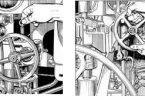- Areas adjacent to the confined space:
Toxicants produced by work in the area of the confined spaces can enter and accumulate in confined spaces.
You may also know :
CONTROL TO AVOID ANY ACCIDENTS:
-
VENTILATION
Ventilation by a blower, eductor or fan may be necessary to remove harmful gases and vapors from a confined space. There are several methods for ventilating a confined space. The method and equipment chosen are dependent upon the size of the confined space openings, the gases to be exhausted (e.g., are they flammable?), and the source of makeup air.
Under certain conditions where flammable gases or vapors have displaced the oxygen level, but are too rich to burn, forced air ventilation may dilute them until they are within the explosive range. Also, if inert gases (e.g. carbon dioxide, nitrogen) are used in the confined space, the space should be well ventilated and re-tested before a worker may enter.
A common method of ventilation requires a large hose, one end attached to a fan and the other lowered into a manhole or opening. For example, a manhole would have the ventilating hose run to the bottom (see diagram) to exhaust all harmful gases and vapors. An air intake should be placed in an area that will draw in fresh air only.
Ventilation should be continuous where possible, because in many confined spaces the hazardous atmosphere will form again when the flow of air is stopped.
De-ballasting a tank does not guarantee a safe atmosphere. Testing is still required.


